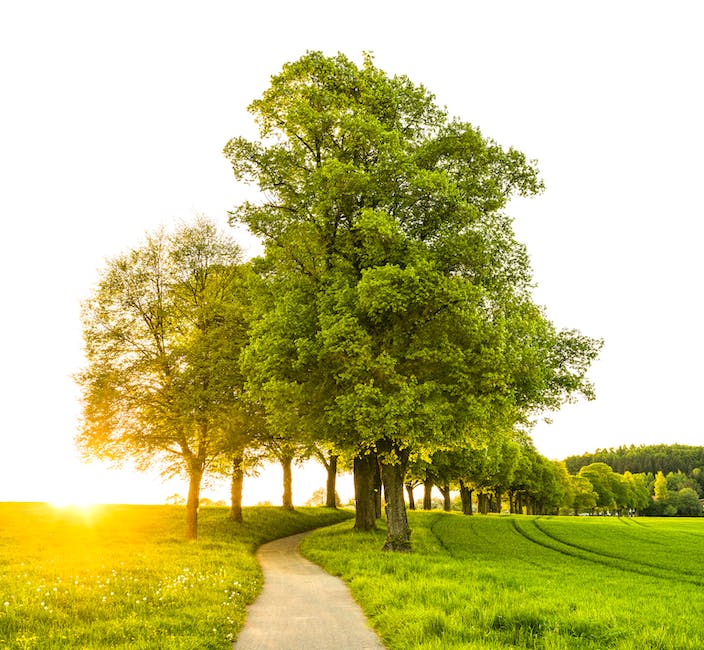Most trees take years to mature, but live oak trees grow relatively fast. In just a few short years, these beautiful trees can provide shady areas for outdoor activities and hearty wood for furniture and construction projects.
No, live oak trees are not fast growing.
How fast will live oak grow?
A growth rate is the speed at which something grows or develops. The growth rate of a tree can be determined by its height increases per year. This tree grows at a medium rate, with height increases of 13–24″ per year.
The White Oak is a superior shade tree that grows 12′-15′ over a 10 to 12 year period, reaching 80 feet or so. Fall color is brown to rich red. White Oak acorns are a preferred food source for many mammals and larger birds.
Which type of oak tree grows the fastest
The Nuttall oak is a fast-growing oak tree that can provide a leafy canopy and a large supply of acorns for animals such as deer and squirrels.
When planting a live oak, be sure to give it plenty of room. The tree can spread up to 120 feet, so plant it at least 15 feet from your home. This will help to avoid leaves and branches falling on your house.
Are live oaks good trees?
A valuable timber tree, southern live oak is also planted as a shade tree and avenue tree in the southern US. It grows rapidly on good soil but is not as long-lived as was once thought: the oldest known specimens range in age from 200 to 300 years. The heavy, strong wood was once used in shipbuilding.
Live oaks are an important part of the ecosystem of the southeastern United States. They provide habitat for many animals and help to stabilize the soil. Live oaks are also an important source of food for many animals.
How long do live oaks live?
The growth rates of live oaks vary depending on the individual tree, but they may reach close to their maximum trunk diameter within 70 years. The oldest live oaks in the country are estimated to be between several hundred to more than a thousand years old, making them some of the oldest living organisms in the world. Although they are long-lived, live oaks are not immune to the effects of time and weather, and many of the oldest trees have been damaged or killed by storms, wildfires, and other natural disasters.
The life span of oak trees varies depending on the species, but the average life span is 100 – 300 years. There are some species that can live for shorter or longer periods of time, but the average is still 100 – 300 years.
Why do they call it a live oak
Live oaks are a type of oak tree that is known for its evergreen leaves. These trees are found in warm climates and are a popular choice for landscaping. The name “live oak” is thought to come from the fact that these trees keep their leaves year-round, unlike other types of oak trees which lose their leaves in the winter. This evergreen quality makes live oaks an attractive choice for those looking for a bit of greenery in their yard all year long.
Oaks are fast growing and sturdy native shade trees. They grow from 1 to 3 feet per year and have a lifespan of 100-200 years. They are known for their strong wood, which is used in construction, furniture, and shipbuilding.
Do oak trees live for 1000 years?
Oak trees may live for up to 1,000 years, although trees on average live to be around 600 years old. All oak trees are classed as ancient when they reach 400 years old, although many trees will have ancient characteristics from as early as 300 years old. A veteran oak is typically between 150 and 300 years old, while a notable oak is usually between 150 and 200 years old.
Live oaks (Quercus virginiana) are massive, long-lived trees that are an iconic symbol of the American South. Despite their name, live oaks are actually evergreen, meaning they keep their leaves year-round. These magnificent trees can grow up to 80 feet tall, spread their branches more than 120 feet across, and their roots can span 90 feet. The lower sections of the trunk are generally short and stout, with its upper sprouting large branches in every direction. Its leaves are small and oval-shaped with a leathery texture. Live oaks are impressively long-lived, with some specimens known to be over 500 years old. These stately trees are an important part of the ecosystem, providing habitat for wildlife and shelter from the hot sun.
What are the pros and cons of live oak trees
When considering oaks for planting in the landscape, it is important to weigh the pros and cons of each species. Water oak and laurel oak are two commonly planted oaks in the southeastern U.S. With a tall upright growth habit, water oak can reach 80-100 feet in height with a sizeable crown spread. Laurel oak typically reaches a height of 60-80 feet with a similar spread. Both species offer decent fall color, although this can be weather dependent. One drawback to both species is that they can develop decay problems as they reach maturity. Water oak is also known to be a fairly high maintenance tree, requiring regular pruning and removal of dead or damaged branches.
Oak trees are very thirsty plants and can use up to 100 gallons of water per day during the growing season. This is why it is important to make sure they have a consistent supply of water. Without enough water, oak trees will start to experience stress which can lead to health problems.
Do live oak trees have deep roots?
The roots of oak trees are highly adaptable and extend deep into the ground, making them incredibly sturdy and strong. The roots can extend up to three times the size of the tree’s canopy, making the tree very stable and providing it with a deep and extensive support system.
Oak trees may not require much maintenance, but younger ones will benefit from proper pruning. This will encourage new growth and full canopies. Be sure to trim and prune regularly to get the best results.
Is live oak a messy tree
If you have an oak tree in your yard, you may find yourself constantly raking leaves. Once the leaves are finally done falling, the oak will drop very messy pollen tassels. Unfortunately, this can also lead to miserable allergies.
Oaks support more life-forms than any other North American tree genus, providing food, protection or both for birds to bears, as well as countless insects and spiders, among the enormous diversity of species. Oaks are important to ecosystem health, and their decline due to human activity – such astree removal, development and pollution – can have far-reaching consequences. For example, the decline of oaks in the eastern United States has been linked to a decline in the population of the fox squirrel.
Do oak trees add value to property
It is clear that proximity to natural features, in this case oak woodlands, has a positive impact on home values. This study provides valuable data that can be used to inform future development in Riverside County and other areas with similar geography.
A live oak is an evergreen oak tree that is native to the southeastern United States. These oak trees are characterized by their dense, dark green foliage and their ability to stay green year-round. Live oaks are popular shade trees and are often used in landscaping.
How do you speed up live oak Growth
The live oak (Quercus virginiana) is a long-lived tree that is tolerant of a wide range of soil conditions. However, for the fastest growth, plant the live oak in moist, well-drained, acidic soil. The tree will grow in many soil types, including sandy, clay and loam soils.
Oak decline is a serious problem that can lead to the death of oak trees. There are several factors that can contribute to oak decline, including drought, defoliation, and diseases caused by fungi or wood-boring beetles. The interaction of these factors can result in the decline and death of oak trees in a local or regional area.
What are 3 reasons oak trees are important
Oak trees are an important part of the urban landscape. They provide protective shading for houses and people, lowering energy needs for cooling homes. Oak trees also improve air quality by storing carbon dioxide and exhaling oxygen through the process of photosynthesis. The leaves of an oak tree absorb airborne pollutants, making the air we breathe cleaner and healthier.
The live oak is a magnificent tree with many features that make it unique. It is known for being tough and resilient, as well as being decay-resistant and having an exceptionally long life expectancy. This makes it one of the most hurricane-resistant trees out there. Not to mention, live oaks can live for hundreds of years and grow to be massively large. All of these factors make the live oak an amazing tree that is definitely worth admiration.
Are oak trees easy to care for
While oak trees require some care when first planted, they are incredibly easy to care for once they are established. Not only are oak trees absolutely beautiful, but they are also beneficial for hundreds of varieties of moths and butterflies. Oak trees are an excellent addition to any landscape!
Oak trees are a massive presence in the natural world, growing to heights of up to 80 feet. They have massive crowns and dense, heavy trunks which rely on an extensive root system to prevent them from falling over. The oak tree’s size and weight make it an impressive sight, and its roots play a vital role in its stability.
Final Words
No, Live Oak trees are not fast growing.
Delaware’s fast-growing live oak trees are a common sight in residential neighborhoods and backyards. A 10-year-old live oak tree can easily grow to be 30 feet tall and 20 feet wide, making them one of the larger fast-growing trees available.
Jackson Hill is a passionate arborist with years of experience in the field of trees. He developed his fascination with trees at a young age, spending countless hours exploring the forests and climbing trees. Jackson went on to study arboriculture and horticulture at Michigan State University and later earned a degree in forestry from the University of Michigan.
With his extensive knowledge and expertise, Jackson has become a trusted authority on trees and their impact on the environment. His work has helped shape the field of arboriculture and he continues to be a leading voice in the industry.
